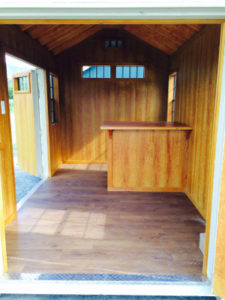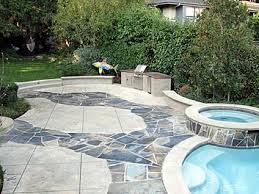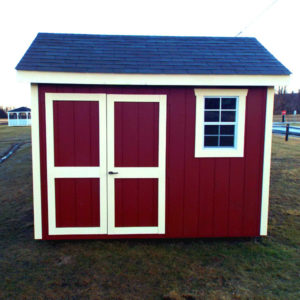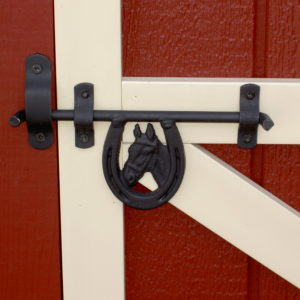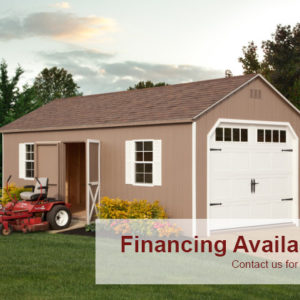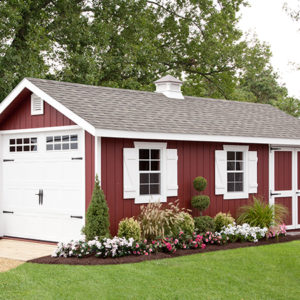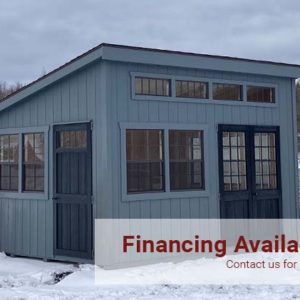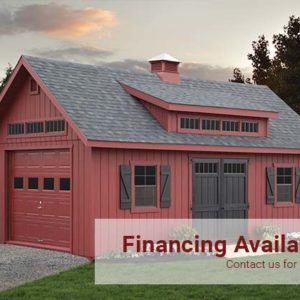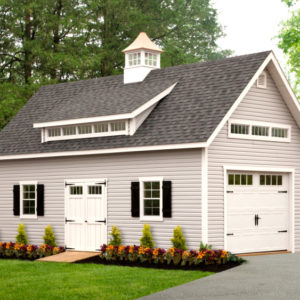
What's New at
Livingston Farm
The Livingston Farm Official Blog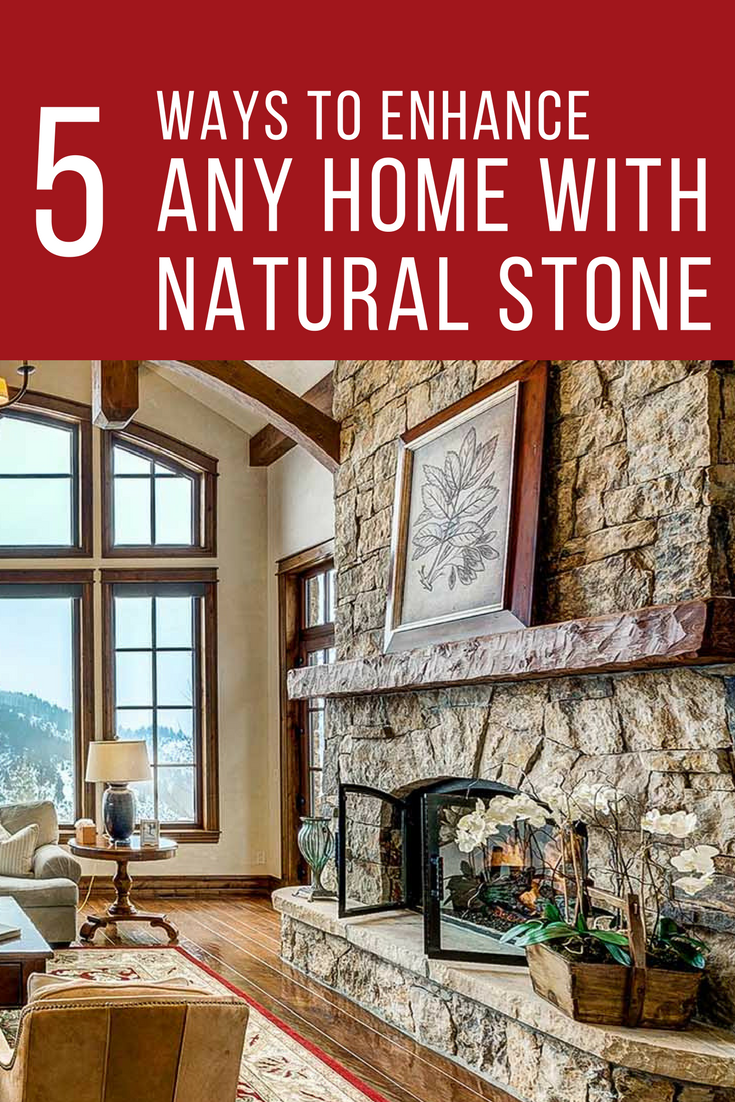
Top 5 Veneer Stone Projects for Your Home or Business
Top 5 Veneer Stone Projects for Your Home or Business
At Livingston Farm, we carry a large selection of high-quality natural stone and stone veneer products, perfect for any home or business project. Often times, when you look at the stone in person, unless you’re in the industry or you have a design in mind, it’s hard to imagine what is possible with the stone product sitting in front of you.
Here are some ideas of what you can do with natural veneer stone to spruce up your home exterior or landscape.How to Enhance Your Home or Landscape with Stone Veneer
1. Statement Fireplace
Nothing is cozier than having a nice fireplace during the cold winter months. So, why not enhance your fireplace by incorporating ledgestone to create a statement fireplace. Our Vermont Thinstone Dove Cove Ledgestone is one of our most popular products, perfect for any New England home.
It’s also critical to not store your wood inside your living area, garage or basement as the wood can attract and contain termites and other pests. You’re probably thinking “what about a small log rack near our fireplace” – that is fine. Be sure to examine the wood for bugs before taking it inside, particularly if it won’t be burned immediately.
2. Outdoor Entertainment Areas:
If you’re a fan of having summer BBQs, entertaining by the pool or like the idea of having an outdoor kitchen, you should consider adding accent walls or natural stone for a warm look. This would be another great opportunity to build an outdoor fireplace.
3. Upgrade Backsplash
For a budget-friendly way to enhance your home, adding a backsplash to any kitchen or bathroom can really spice up the room. Consider adding a section of veneer stone to the wall behind your stove to add more contrast to your current kitchen. Or, create a spa theme in your bathroom by wrapping the wall by the shower or bathtub for extra sizzle.
4. Retaining Wall
Do you have a concrete retaining wall that wins function over the style? One way to give it an instant facelift without having to tear it down is adding stone or brick veneer to bring it to life.
We recommend using the ledgestone or mosaic thin stone but your options are endless.5. Wrap Columns and Pillars
To enhance your home exterior for neighbors to admire, consider adding stone veneer columns to instantly add curb appeal. Selecting a variety of Vermont Thinstone Ashlar style stone can really bring out the character of your home.
If you’re wondering what type of stone to use, how much you will need or where to order the product, Livingston Farm in Bristol, VT is here to help. Our staff is extremely knowledgeable when it comes to landscape design. And, if you’re not familiar with the Vermont Thinstone product or how to apply veneer stone, you’re in luck! We’re having a Veneer Stone Application Class on March 15th at our Livingston Farm location. Sign-up today to reserve your spot and enjoy a FREE lunch.
Contact Us
Ready to get started on your next stone veneer project? Give us a call at 802.382.0992, complete the contact form below or swing by our location. We’re located at 40 South Route 116, Bristol, VT 05443 – just a short drive from Middlebury and Burlington, VT.
February 24, 20182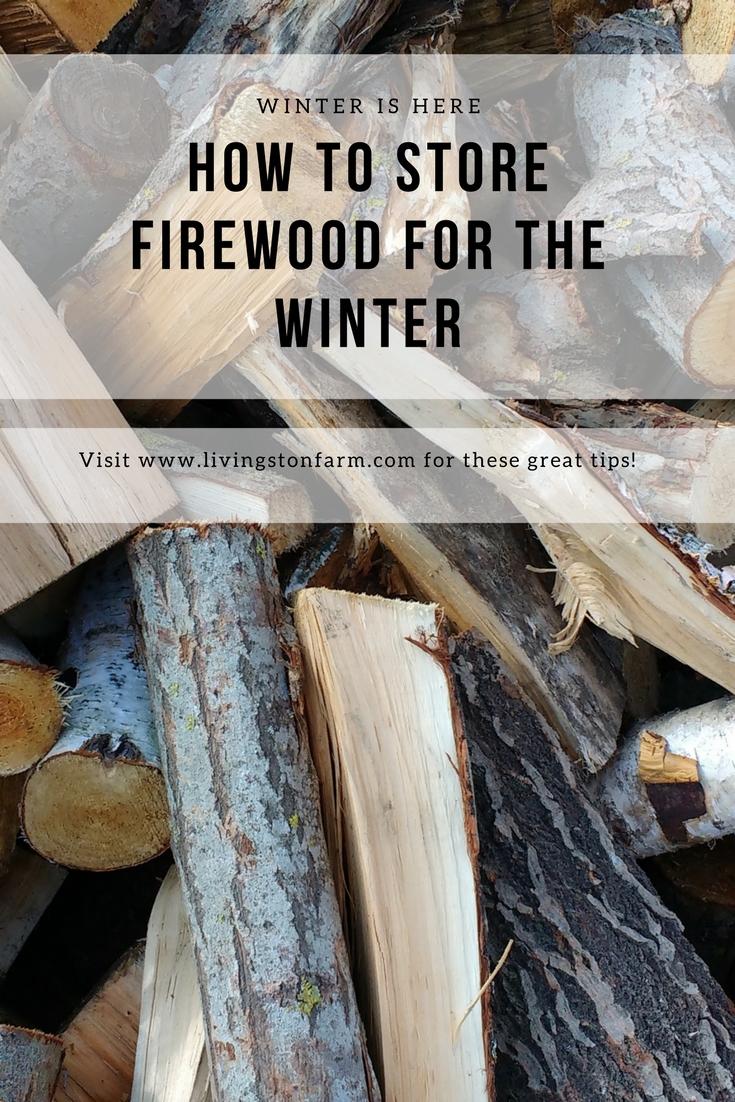
How to Store Firewood for Winter
How to Store Firewood for The Winter
Learn techniques for stacking and keeping your wood dry, through harsh winter weather.
It’s important how you store your firewood, not only protecting your home but also the investment you made to heat your house during the cooler months. With these suggestions, you’ll know the proper storage location and care for your firewood.
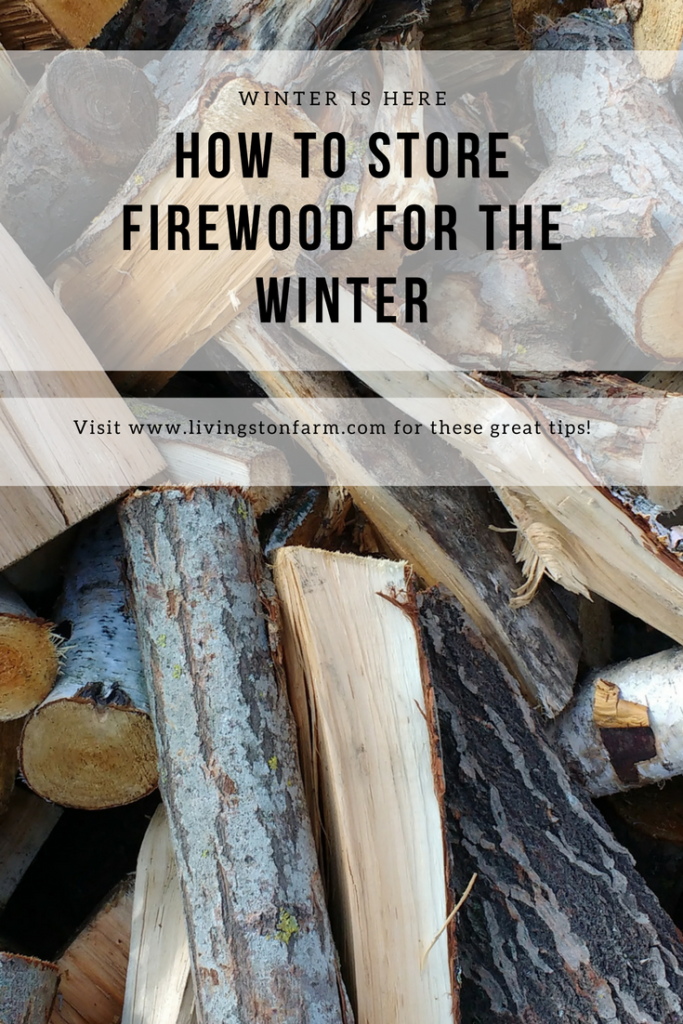 1. Location is Important
1. Location is ImportantMake sure the firewood is stored at least 30 feet away from your house but close enough to readily access. Remember, you won’t want to hike a mile to get firewood when the wind-chill is below zero. Finally, choose an area that is off the ground, or you can place pallets under the wood to allow for plenty of air circulation to prevent mold and mildew. If you can, a covered firewood shed is ideal.
It’s also critical to not store your wood inside your living area, garage or basement as the wood can attract and contain termites and other pests. You’re probably thinking “what about a small log rack near our fireplace” – that is fine. Be sure to examine the wood for bugs before taking it inside, particularly if it won’t be burned immediately.
2. Drying and Seasoning the Wood:
For most homeowners, if you’re purchasing the wood from someone, chances are the drying and seasoning process is complete. This is more for the homeowners that have chopped the wood and it’s still green and not ready for the fireplace. The drying process can take time, often months, but it all depends on the type of tree and the environment – A sunny area with wind is key.
Here are some ways you’ll know if the wood is ready to use:
- Wood is dark brown, gray or hint of yellow
- Small cracks around the edges near bark
- Knock wood against another piece of wood, it makes a high-pitched noise
If reasonable, stay ahead if you’re chopping the wood yourself to provide plenty of time for drying. And, while you’re between the chopping and stacking stage, cover the wood with a tarp to cover it if rain is in the forecast.
3. Stack the Firewood
Before you begin stacking, make sure the storage area is level, stable and off the ground. If you’re located in an area prone to rain, be sure to stack the firewood with the bark facing the ground. For those of you in Vermont or locations with snowy winters, stack the wood with the bark facing the sky.
Stack the larger pieces of wood near the bottom of the pile, in level rows. Continue to check the pile as you stack to ensure it’s not leaning – this will help avoid disasters, trust us. As you stack, keep air gaps between the rows to help the air flow. Finally, remember not to stack the pile so high that you won’t be able to reach the wood when you need it. We recommend no higher than 4 feet since wood tends to shift as it dries and taller stacks can pose a threat to children and pets.4. Keep it Covered
This is important. Make sure you cover the wood to protect it from harsh rain, snow or ice throughout the winter. This can be done by storing your wood in an open storage shed that allows wind flow through opposite sides, covering the wood with a tarp or purchasing a firewood rack cover large enough to fit the pile.
If you’re looking for a firewood storing solution, Livingston Farm has a vast variety of firewood sheds and add-on wood storage products that can attach to any outdoor structure, such as a shed or garage. To learn more about our products, feel free to give us a call or submit the form below.
Contact Us
Ready to get started on your next landscaping project or interested in designing your new outdoor shed? We have various specials and current savings happening now at our Bristol, VT location. Feel free to give us a call at 802.382.0992, complete the contact form below or swing by our location. We’re located at 40 South Route 116, Bristol, VT 05443 – just a short drive from Middlebury and Burlington, VT.

5 Home Improvement Projects You Should Do Before Spring
5 Home Improvement Projects You Should Do Before Spring
It’s winter time, most of us are inside staying warm, enjoying winter activities and conceivably starting to get ‘cabin-fever’. If you’re not a fan of winter sports, such as snowmobiling (the Livingston’s love snowmobiling), skiing/snowboarding, snowshoeing or ice fishing, you could find yourself spending more time eating casseroles and watching Netflix. After the celebrations pass, winter is a great time to tackle home improvement projects.
Here are some recommended home projects to complete this winter.
1. Declutter Your Closet, Junk Drawers and Garage
This is a big one for most, especially after the holidays. As you’re putting items away from hosting holiday gatherings or finding places for gifts you received, you should start parting with any platters, clothes or other household items you no longer use. Don’t waste time keeping clothes that no longer fit or shirts you haven’t worn for over a year. Preferably, donate them to a charity or Goodwill.
Another pro-tip while decluttering your home or garage, start with one room at a time. Start with a shelf, one drawer or one room and separate the items you haven’t used in over a year. This will be rewarding once it’s done and your home is organized!
2. Paint Walls
Are you tired of the eggshell color in your office? Looking for an inexpensive way to bring life to any room? Well, why not change up a room by adding fresh paint. If you determine you’re not in love with the color you chose, you can always cover it. Experts observe the winter is the perfect time to repaint a room since the air is dry and a brighter color, plus change, will help brighten your mood (see what I did there?).
Or, if you want to try something new, you could even add more dimension to any room by painting the ceiling with a lighter blue or beige to complement the new color.
3. Seal Openings and Air Leaks
The best time to seal the small cracks and tighten up around windows and doors, to prevent cold air coming in, is in the winter. While it’s cold, and you can feel the cold draft coming through, you should use this time to address interior and exterior caulking projects to ensure moisture is sealed out. This will help you conserve energy and money this winter, by decreasing the heating bill after you seal the small cracks and gaps with your new caulking skills!
4. Organize Your Closet
What better way to begin the New Year by staying organized. Depending on your New Year’s resolution, whether it’s the traditional ‘keep organized’ or ‘getting in shape’, this winter project will give you a head start in the right direction. And, customizing a closet can be fun. I mean, I’m sure you already have a Pinterest board imagined for staying organized already – but, why not create the pin this winter.
Just keep in mind, closet storage solutions won’t give you more space in your closet unless you declutter first. Closet organizers, storage solutions, and systems can help make more storage space convenient to you by having a place for each article in your wardrobe. Here’s a great article to get you incited on the best way to undertake this project.
5. Install Backsplash in Kitchen or Bathroom
Having a nice backsplash in your kitchen or bathroom is an excellent way to complement the room. Think of it as a way to accessorize your counter tops, cabinets, and appliances to really make them stand out. If you’re looking to add more color and style to your kitchen, choose a flashy or textured tile to wake up a dull scheme. Or, if you’re kitchen already has enough character and color, consider using a neutral tile to complete the look.
If you’re ready to tackle this project, here is a great post from HGTV to show you how to install your own tile backsplash in your kitchen or bathroom.
Already completed some home projects mentioned above? We want to see! Send us your latest home improvement project you have completed this winter and be entered to win a free Livingston Farm gift!
Contact Us
Ready to get started on your next landscaping project or interested in designing your new outdoor shed? We have various specials and current savings happening now at our Bristol, VT location. Feel free to give us a call at 802.382.0992, complete the contact form below or swing by our location. We’re located at 40 South Route 116, Bristol, VT 05443 – just a short drive from Middlebury and Burlington, VT.

Anti-Mosquito Tricks
Top Tips to Avoid Mosquito’s This Year
Zika, West Nile, Malaria, Dengue … these illnesses are spread by the flying disease-delivery vehicles known as mosquitoes and they are continuing to expand their territories. Along with diseases, mosquitoes and their little needle mouth parts offer no shortage of itchy welts, meanwhile, their annoying hum can keep the soundest of sleepers swatting at their faces all night.
Do mosquitoes fall in love with you daily? I seem to have won the mosquito lottery – they usually don’t want anything to do with me. I’m not sure if I should be offended, or holler from the rooftops. Others aren’t so lucky, studies show that 20 percent of people are especially irresistible. Researchers from the University of Florida in Vero Beach note that some people are “High attractor types”.
The researchers mention there are two factors of mosquito attraction and they have to do with sight and smell. Ok, this may seem obvious to most but mosquitoes are not so easy to figure out…I know there are so many wives’ tales out there like eating bananas, eating garlic, or putting Marigolds around your house, I’m sorry to break it to you but you are wasting your time. Scientists do however think the following factors likely come into play.
1. Apparel
 As mentioned above, mosquitoes actually use their eyes to target victims. According to researchers mosquitoes are highly visual, “especially later in the afternoon, and their first mode of search for humans is through vision.” Wearing dark colors (navy, black) and red make you easier to spot.
As mentioned above, mosquitoes actually use their eyes to target victims. According to researchers mosquitoes are highly visual, “especially later in the afternoon, and their first mode of search for humans is through vision.” Wearing dark colors (navy, black) and red make you easier to spot.2. Blood type
It’s all about the blood for mosquitoes; well that and nectar. Adult mosquitoes survive on nectar for nourishment, but females rely on the protein in our blood for the production of eggs. So it’s little surprise that some blood types may be more desirable than others. Research has found, in fact, that people with Type O blood are found to be twice as attractive to mosquitoes than those with Type A blood; Type B people were in the middle. In addition, 85 percent of people produce a secretion that signals what blood type they are; mosquitoes are drawn to those 85 percent more than the non-secretors, regardless of blood type.3. Gas
Mosquitoes can sense carbon dioxide up to 160 feet away; so the more one exhales, the more attractive they become. Larger people exhale more. Also to note, since human beings exhale carbon dioxide through the nose and mouth, mosquitoes are attracted to our heads, which explains the whole “mosquitoes buzzing about the ears all night” misery.4. Heat and Sweat
Mosquitoes apparently have a nose for other scents besides carbon dioxide; they can sniff down victims through the lactic acid, uric acid, ammonia and other compounds emitted in sweat. They also like people who run warmer; a hot sweaty human must seem quite delicious to them – couch potatoes, rejoice. Strenuous exercise increases the buildup of lactic acid and heat in your body, the Smithsonian points out, while genetic factors “influence the amount of uric acid and other substances naturally emitted by each person, making some people more easily found by mosquitoes than others.”5. Lively skin
Some research has shown that the types and amount of bacteria on one’s skin can play a role in brining on the mosquitoes as well. Our dermal casing is naturally teeming with microscopic life, and the whole mixture creates a distinct fragrance. In one study, a group of men were divided into those who were highly attractive to mosquitoes and those who were not. The delicious ones had more of certain microbes on their skin than the unattractive ones, but fewer types – a larger community but less diverse. The bacteria factor could also explain why some mosquitoes are drawn to ankles and feet, an especially ripe source of bacteria.6. Pregnancy
Women with a bun in the oven are probably those least wanting to attract mosquitoes, but alas, some species are evidently more attracted to pregnant women than women who are not. One study in Africa found that pregnant women are twice as attractive to malaria carrying mosquitoes as non-pregnant women; researchers believe it is due to an increase in carbon dioxide – they found that women in late pregnancy exhaled 21 percent greater volume of breath than non-pregnant women. They also discovered that the abdomens of pregnant women were 1.26°F hotter, adding to the mosquitoes-like-warm-bodies component.7. Beer
Who knew mosquitoes had a taste for beer? The little lushes. In one study researchers found that significantly more mosquitoes landed on study participants after drinking a 12-ounce beer than before. The scientists figured that it was due to increased ethanol content in sweat and skin temperature from consuming the brew, but they were unable to find the exact correlation, just that it happened. So nobody knows why, clearly the crafty pests aren’t targeting inebriated folks as easy marks, but it does seem to be a thing.Did you know Livingston Farm’s screened in gazebos can build you a truly effective wall of defense from these blood robbing, thieves. If you enjoy the welts, the itching and lathering yourself with DEET, then continue as is, but if you would like some reprieve, come visit Livingston Farm’s fully screened in gazebos. Hopefully our advice can help you relax and enjoy your summer!
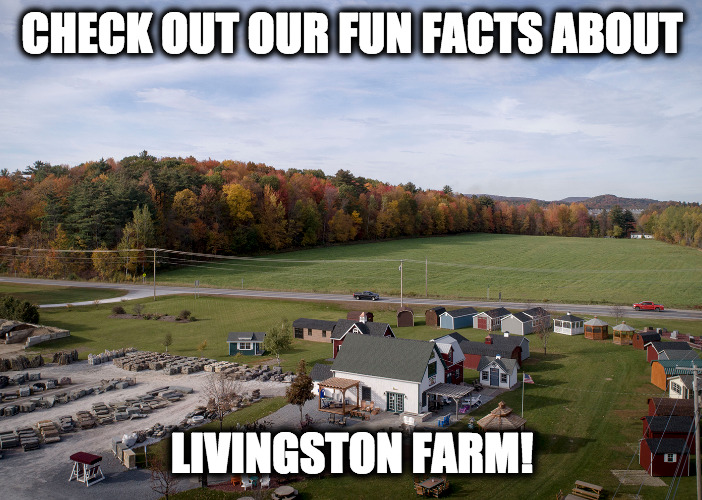
DID YOU KNOW facts about Livingston Farm…
A few fun facts about Livingston Farm:
- Our name was once Livingston Farm Landscape Products and Storage, then changed to Livingston Farm Landscape Products and Excavation, phew those were a mouthful….
- When Livingston Farm began, there were 2 employees, we now have 10.
- Livingston Farm began in 1998 when Dave and Stanley sold the cows.
- At one point, Livingston Farm had 4 employees named Dave working at the same time and currently has two employees named Tyler.
- The original Livingston Farm once had a Pig named George which happens to be Dave’s middle name.
- When Dave was a child on a dairy farm he spent many hours of his summers hand-picking stones from fields to prepare the fields for crops. We are sure he didn’t think then about all of the amazing walls he could have created with all of those stones.
- All of Dave’s children currently work at the business.
Winter is coming! Save your plants and trees!
As any New Englander knows, we have 4 seasons: winter, spring, sum
 mer, and fall. Plants and trees experience life cycles through these seasons. For human beings, life cycles occur every day. We require a certain amount of rest each day (we call it sleep) to be our smiley selves each day. The amount and quality of our rest helps to determine how healthy and productive we are. Most trees “sleep” each winter (we call it their dormancy period) while some animals are hibernating. The amount and quality of animals and trees determines how healthy and productive they are! Livingston Farm would like to help
mer, and fall. Plants and trees experience life cycles through these seasons. For human beings, life cycles occur every day. We require a certain amount of rest each day (we call it sleep) to be our smiley selves each day. The amount and quality of our rest helps to determine how healthy and productive we are. Most trees “sleep” each winter (we call it their dormancy period) while some animals are hibernating. The amount and quality of animals and trees determines how healthy and productive they are! Livingston Farm would like to help you prepare your plants and trees for winter and make their dormancy period the best it can be.
you prepare your plants and trees for winter and make their dormancy period the best it can be.Outdoor Plants and Trees
Insulation
It is important to protect the root systems of young plants and trees. This can easily be achieved by applying a layer of mulch on top of top soil or compost around the root system, be sure not to pile too much around the trunk. When this happens, you can encourage potentially harm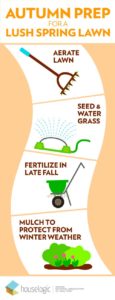 ful issues like creating an environment for rot or nibbling-critter damage. Mulch at Livingston Farm is created from natural things like wood chips and sawdust, these natural ingredients act as insulators that protect the roots when the temperature drops in late fall/winter/early spring. Mulch also acts as a weed deterrent and helps retain moisture during the growing season.
ful issues like creating an environment for rot or nibbling-critter damage. Mulch at Livingston Farm is created from natural things like wood chips and sawdust, these natural ingredients act as insulators that protect the roots when the temperature drops in late fall/winter/early spring. Mulch also acts as a weed deterrent and helps retain moisture during the growing season. Depredation
As summer comes to a close, the grass and ground-covers toughen, moving rabbits, squirrels and field mice to chew on tree bark. This destructive threat increases with cold weather and snow cover. On the farm, outbuildings, clutter and ground-cover provide adequate cover to house this animal. In urban settings, landscaping, hedges, and ground-cover provide the same housing and can be even worse than the rural setting. It’s heartbreaking to grow and nurture plants and trees along, only to wake one morning to find them girdled to death or impaired for life by hungry critters.
and nurture plants and trees along, only to wake one morning to find them girdled to death or impaired for life by hungry critters.Small animals can chew trees way up into their fifth and sixth season. Simple and inexpensive solutions that can be applied in mere seconds are tree guards. These wraps also afford protection to the trunk by reflecting the winter sun’s rays. Most winter damage to the tree’s trunk is from getting warmed up on bright, sunny winter days. At nightfall, the trunk often doesn’t adjust to the sudden temperature drop. Trunk-protecting tree guards can help with this.
Container Plants and Trees
Folks who live in small quarters (or just choose to grow plants and trees in containers) come to a crossroad when the nighttime temperatures fall below 15ºF. The problem is this: when the temperature dips to 20ºF and stays there for a while, it’s possible to freeze the core roots of the plants. Until you decide to bring the plants inside, you should thoroughly water the pots prior to cold snaps. This will help protect the roots. It’s easier for freeze damage to occur in a dry container than in a wet container.
When the weather gets cold, and you are working toward winterizing, you can move your container plants into an unheated garage or shed. Prior to moving, thoroughly water the pots. If a plant is cold-hardy, you can leave it outside by mounding 4-6 inches of mulch around and over the top of the pot – heavy enough to provide a protective barrier around the pot. Prior to mounding, you should adequately water the pot. For added protection, consider using some type of rodent bait in the sawdust or mulch to avoid mice depredation.
Keep in mind, some container plants need to be transferred inside because they may not be cold hardy for the zones in which they are planted.
How well we balance our sleep life with our work life can help determine the quality of our senior years. Since a plant endures four seasons each year, its rest period and our care can determine both its performance and longevity. Livingston Farm can help you keep all of your plant life alive!
Learn More About Tiny Homes
Tiny Home Adventures!
What are Tiny Houses? The Tiny House Movement? Tiny Living?
Simply put, it’s a social movement where people are downsizing the space that they
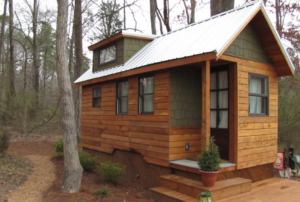 live in. The typical American home is around 2600 square feet, while the typical small or tiny house is around 100-400 square feet. Tiny Houses come in all shapes, sizes and forms but they focus on smaller spaces and simplified living.
live in. The typical American home is around 2600 square feet, while the typical small or tiny house is around 100-400 square feet. Tiny Houses come in all shapes, sizes and forms but they focus on smaller spaces and simplified living.People are joining this movement for many reasons, but the most popular reasons are because of environmental concerns, financial concerns and seeking more time and freedom. For most Americans, 1/3 to 1/2 of their income is dedicated to the roof over their heads; this translates to 15 years of working over your lifetime just to pay for it and because of it, 76% are living paycheck to paycheck. So what is the alternative? One might be to live smaller. While Livingston Farm doesn’t think tiny houses are for everyone, there are lessons to be learned and applied to escape the cycle of debt, where almost 70% of Americans are trapped right now.
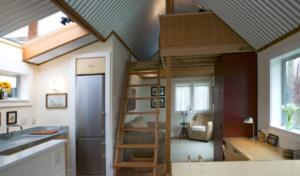 This is a growing movement, that is for sure! With international attention on CNN, AP, Guardian, Huffington Post, NBC, Oprah, PBS and so many more people have come to know about another way to live their lives.
This is a growing movement, that is for sure! With international attention on CNN, AP, Guardian, Huffington Post, NBC, Oprah, PBS and so many more people have come to know about another way to live their lives.The tiny house phenomenon redefines what makes a house a home, empowers the people for a better future and leads to movement that breaks the mold every day. The tiny home phenomenon redefines what makes a house a home, they empower the owner for a better future and lead to movement that breaks the mold every day. Tiny house people come from all walks of life. With the cost of affordable housing rising every day, it makes sense to look at other options for their living accommodations. A tiny house built by Livingston Farm is the perfect solution for this growing trend. Your tiny house can serve as the perfect vacation home, guest house, office, studio, or a place to call your own.
Our Quality-All of our buildings are constructed with high-quality materials and include free installation, innovative engineering and design, and an industry-leading 1 year warranty coverage. We’ve been bringing quality-made outdoor structures, tiny homes, guest homes and cottages to happy customers throughout Vermont for the past 10 years and we’re ready to help you make the most of your living space. Our tiny homes have been thoroughly tested to assure they are safe and built to industry standards.
Customizations-Let your imagination run wild! When we combine our expertise with your dreams, we can build a home you will entertain in for years. Livingston Farm will design the
 outer walls of your tiny home and partnered with a contractor of your choice, we can actualize every detail of your wish list. Our tiny homes can be built as one-story or two-story homes. Your idea of having your own “space away” is our specialty. Let us help you enjoy building a home that meets all of your needs.
outer walls of your tiny home and partnered with a contractor of your choice, we can actualize every detail of your wish list. Our tiny homes can be built as one-story or two-story homes. Your idea of having your own “space away” is our specialty. Let us help you enjoy building a home that meets all of your needs. Delivery-If you choose one from our in-stock buildings, your tiny home can be delivered within days! If you want to design your own, we begin building as soon as your order is placed. You can have it delivered and begin your inside finishing work in just a few weeks! Every Livingston Farm tiny home includes free delivery and on-site installation within 50 miles. We have specialized equipment to deliver your home onto your property with minimal damage to your lawn or property surface. Livingston Farm can place your home on a basement, crawlspace, or slab foundation. Please call or email us to setup and coordinate your next tiny home delivery today.
Livingston Farm Team-We’re a local Vermont company of builders, landscapers, gardeners, excavators, designers, and stone masons. That combination means that each one of us can help you find solutions to the most complex home or business challenge. We are eager to help you with any project you may have, as if it were our own. We can deliver, install, prepare the site, and remove any other obstacles (upon request) as a team. We look forward to working with you to create your dream home.
Vermont Company-As a local Vermont business, we hire people with a better understanding of the products we sell, build and deliver. We take more time to get to know our customers and stand by the quality of our products and service. Here at Livingston Farm, we proudly support local Vermont and USA made products.
Trees That Provide the Best Shade
Find Out Which Trees Provide The Best Shade with Livingston Farm
Fast Growing Shade Trees
Hot hot hot! Summer temperatures are here and Livingston Farm is here to help! Many areas across the nation are experiencing temperatures around 90 degrees and above, along with prolonged dry periods. This is great for days by the pool or out on the lake, but what about your garden?
It is often easy to assume that the conditions in northeastern climates are tough for plants to survive in. However, there are multiple varieties of drought tolerant plants and trees big and small that will thrive in the heat, even with little to no water. These plants will turn your dry landscape into a relaxing oasis. Livingston Farm carries some of the best cow-manure compost and topsoil in Vermont! We have exactly what your trees need to start their healthy life!

The Gingko Tree provides months of colors with their unique, heart shaped green leaves that turn a vibrant shade of golden yellow in the fall. They glow in the landscape while other plants are entering dormancy.
Worried about a smell? Don’t be. Male Ginkgo varieties don’t produce fruit so they don’t produce the same smell that female Ginkgo trees have.
These trees can be grown anywhere. They’re cold hardy up to growing zone 3 and will survive harsh, snowy winters. They are also smog tolerant, making them perfect for urban areas. Most importantly, they are drought tolerant and heat resistant, so not even the blazing sun or scorching heat will stop Gingko Trees from thriving.
Chinese Pistache trees should not be overlooked, because they add beauty and functionality to the landscape. They have thick, green canopies that create shaded areas beneath them that are perfect for hanging out under during hot days.
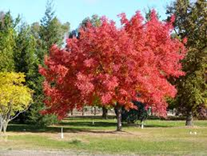 These are tough and low maintenance. They will tolerate urban smog and pollution, and will adapt to a variety of poor soils that are sandy or heavy in clay. Landscapers flock to Chinese Pistache trees because they’re one of the most heat resistant fall foliage trees available, with a high level of drought tolerance. It’s an ornamental tree that nearly impossible to kill.
These are tough and low maintenance. They will tolerate urban smog and pollution, and will adapt to a variety of poor soils that are sandy or heavy in clay. Landscapers flock to Chinese Pistache trees because they’re one of the most heat resistant fall foliage trees available, with a high level of drought tolerance. It’s an ornamental tree that nearly impossible to kill.In the fall, their green leaves turn multiple shades of red, orange and yellow for a vibrant fall foliage display. By growing to about 25 to 35 feet tall, they’ll be noticed all over the neighborhood and recognized as one of the most beautiful trees.
Phenomenal Lavender bushes only grow to about three feet tall, so they will never outgrow an area with limited space. Even though their size is little, their personality is big.
By blooming for months every summer Lavender illuminates the landscape with tons of purple flowers. The flowers have a sweet fragrance that fills the summer air.
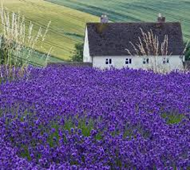 It often attracts butterflies and hummingbirds, which are a delight to watch.
It often attracts butterflies and hummingbirds, which are a delight to watch.It’s always great to have this lavender variety on hand because it naturally keeps mosquitoes away. In the summer during barbecues or family reunions your guests won’t have to use harmful chemical sprays.
Best of all,
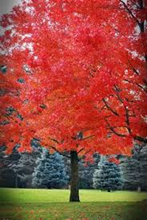 Phenomenal Lavender is incredibly low maintenance. It’s the hands-free flowering shrub with a high level of drought tolerance and heat resistance, so it will continue to bloom and thrive during the hottest heat waves of the year.
Phenomenal Lavender is incredibly low maintenance. It’s the hands-free flowering shrub with a high level of drought tolerance and heat resistance, so it will continue to bloom and thrive during the hottest heat waves of the year.There is little to no wait with the American Red Maple. It grows up to three feet per year, which is a rapid growth rate. Forget waiting for a large, beautiful shade tree because you’ll almost instantly have a mature maple tree. The American Red Maple is recommended for growing zones 4 through 9 and will adapt to a variety of poor soils, while also being urban tolerant. They will clean and filter the air in smoggy city areas.
Most importantly, the American Red Maple is beautiful. It has a thick canopy filled with lush green leaves that create a shaded area beneath it that’s perfect for hanging out under during a warm sunny day. In the fall the green leaves turn a shade of bright red for a vibrant fall foliage display that can be seen from miles away.
When we get hot and thirsty, so do our plants, but that doesn’t mean that you have to take a break from gardening and improving your landscape du
 ring the summer. There is a large variety of heat resistant and drought tolerant trees that will laugh at the heat while providing beauty all summer long.
ring the summer. There is a large variety of heat resistant and drought tolerant trees that will laugh at the heat while providing beauty all summer long.Adding trees to your landscape can bring about fresher air, privacy, and shade to relax under, all while increasing your property value. It’s no secret that a beautiful landscape can increase the value of a home, while benefiting your neighborhood with vibrant green hues for everyone to enjoy.
You can find the right tree for your landscape for any project, from needing a living privacy fence to planting ornamental flowering trees in your landscape. No matter what you’re looking for, consider a tree with a rapid growth rate in order to have a full bodied, mature tree in your yard, without waiting for years before your tree takes off. If you have any questions, Livingston Farm is here to help!
The New Bar-Shed
Turn Your Shed into the Hottest Hangout Spot with a New Bar-Shed
The new home and garden trend is sweeping the internet, and it’s actually pretty amazing and doable. We’ve seen she-sheds and man-caves but the BackYard Bar Shed puts a different spin on making the most out of your shed. Bar sheds are popping up all over the place, and some of them are pretty darn creative. With a wide array of different options, this is one of the least dau
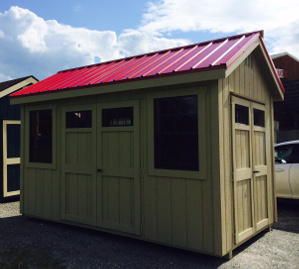 nting projects we’ve come across in a while. Let us build the shed and you can customize the inside.
nting projects we’ve come across in a while. Let us build the shed and you can customize the inside.Backyard Watering Hole
The fun thing about bar sheds is that you can get as creative and elaborate as you’d like. Plus, it gives you a place to put all of those beer mirrors and bar games you’ve been storing in your garage since your college days.
What comes to mind when you hear the phrase “bar shed?” I’m guessing many of you have never heard that phrase. It’s so simple, yet until we built our first one, I’d never heard of them, let alone walked inside of one.
It’s pretty genius, right? When we had a customer send us a picture asking us to build it, I was blown away. How have I never thought of this? I wondered. You’ve got a private area, outdoors (yet still covered), disconnected from your regular living space. An attainable retreat at almost anytime. It’s perfect.
From what I’ve learned, the trend started because everyone has their fresh fruit and vegetable gardens and they needed a shed to be outside near their garden retreat. Many people have sheds for storing gardening tools but that’s their only purpose; to keep a $5 rake safe. Naturally, folks started enjoying a quick beer or cocktail in these sheds, and eventually, a few people gathered, mini happy hours casually formed, and from there, the natural evolution of bar sheds began.
This trend has been taking off for many years in the UK, and it’s now starting to pick up steam in the US as well. Many home brewers use their sheds on brew day and refer to the space as a “brew shed.” And of course, we’ve all seen a backyard shed fitted with tiki decor.
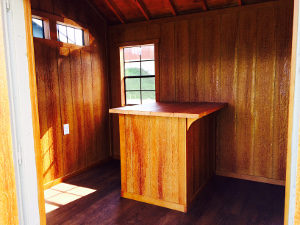
We even have a family member who has a bar shed. He doesn’t call it that, and I never realized it until writing this article, but it’s the size, shape, and build of a standard shed, located near their pool. It houses all of the pool supplies, alongside a nice 4-person bar, a beer fridge, and a sizable selection of other adult beverages.
It was right in front of my eyes all this time. I just never really thought of it as a bar shed.
Start Creating!
After all, it’s a great way to re-purpose a storage space (if yours is just gathering dust and junk), an awesome venue for small get-together with friends, and a perfect refuge for you and the people you live with when you need a few hours apart. Here at Livingston Farm we can create your next backyard bar shed, it’s up to you to dream!
Natural Stone Pavers vs Concrete Stone Pavers
NATURAL STONE vs CONCRETE STONE PAVERS
One of the biggest decisions you will make about your landscape is which hardscape material to choose for your patio and other outdoor areas. Unlike plantings and furniture, hardscape materials are not easy to change once they are installed, so it’s a big commitment. Many of our customers ask us, “What is the best hardscape material for my new landscape?”
It’s not an easy answer. It really depends on your style, vision and budget. And you have two very distinct choices when it comes to hardscape materials from Livingston Farm.
To help you decide which hardscape material is the best choice, we’re going to discuss concrete pavers vs. natural stone.
Your patio is where you’ll spend most of your time in your landscape, so you’ll want to pick a hardscape material that creates the right atmosphere for your landscape design.
What Style Are You Looking For?
As you think about your patio function and size, you’ll want to consider what each material offers and how that fits in your overall landscape design.
Do you want a symmetrical or more natural look? Do you want colors that blend with or contrast the colors of your home?
Hardscaping materials come in a variety of colors and textures. Some materials are more suited for traditional and historical homes while others are perfect for modern and contemporary designs. For installations in your community and the surrounding areas, you’ll need to be sure the materials you pick hold up in various weather conditions with installation.
And in some cases, you may want to blend pavers and natural stone pavers to create accents, patterns, borders or even combine a mixture of sizes and contrasting shapes.
Now that you’ve determined the look of your patio, here are the hardscaping materials you need to consider.
Concrete Pavers
Concrete pavers offer a multitude of style choices — from modern to classic —they are beautifully suited to many patios, outdoor kitchens and pool areas and offer many choices for designs. Classic style pavers mimic the look of brick and are a popular choice for traditional and historic style homes because it is the ideal paving material if you want to create an established and authentic look. But the modern style — with irregular shapes and precision cuts — can be used in Vermont landscapes as they are adaptable for more contemporary designs.
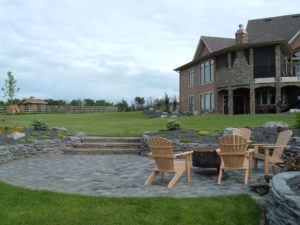
Traditionally rectangular in shape, Concrete pavers can also be irregular or square shaped and laid in many patterns including herringbone, basket weave and even circular patterns. The biggest advantage to concrete pavers is the variation of colors — from white wash to grays and browns to reds — so you can choose to mix and match colors or alternate depending on your pattern.
Concrete pavers are ideal for Vermont climate because they can rise with the winter freeze and settle back into place during the summer thaw, allowing them to “flex” with the temperatures, whereas regular concrete would crack. If any damage does occur, pavers can also be pulled up in isolated sections and re-laid without tearing out the entire area.
Concrete pavers can start at $4.77 per square foot to purchase depending on the size of the project, access, slope, shape and other variables.
Natural Stone Pavers
It can be difficult to choose the best stone for patios — as you have a lot of options when it comes to natural stone pavers. You can choose flat-topped uniform stone or rough-edged irregular shapes. Natural stone pavers can be made of slate and flagstone— colors vary naturally and offer a rich, textured, earthy appearance. Vermont stone’s natural colors skew more towards greens, greys and blacks.
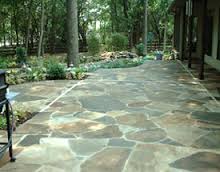 The type of natural stone you choose depends on the look and feel of your patio and landscaping. Irregular flagstone can create a gorgeous, rugged look with a lot of detail, while uniform dimensional stone offers more linear and symmetrical patterns.
The type of natural stone you choose depends on the look and feel of your patio and landscaping. Irregular flagstone can create a gorgeous, rugged look with a lot of detail, while uniform dimensional stone offers more linear and symmetrical patterns.Natural stone pavers will start around $8.25 per square foot to purchase depending on the size of the project, access, slope, shape and other variables.
So, Concrete Pavers vs. Natural Stone?
Your patio will be where you will spend most of your time outdoors. Whether you are hosting outdoor parties or just enjoying a relaxing day around the pool, your choice in materials will most often reflect your home’s style and architecture. And there are many other factors to consider when you are comparing concrete pavers vs. natural stone— including price, design options and maintenance.
And your patio might not be the only hardscaped feature in your yard. Hardscape materials can also be used in these areas to create retaining walls, outdoor kitchens, fireplaces and fire pits — and even paths, walkways and driveways. If your landscape has several of these elements, you may want to consider materials that can easily blend all of these elements together to create an inviting and natural atmosphere — and increase curb appeal.
The best way to determine which hardscape material is right for you is to come into our office at 40 South Route 116 Bristol, Vermont or check out our stone catalog online. Livingston Farm would be happy to help you pick the right shapes and patterns to build the patio, walkway or driveway of your dreams!

